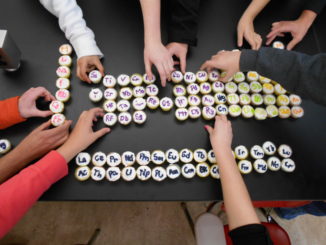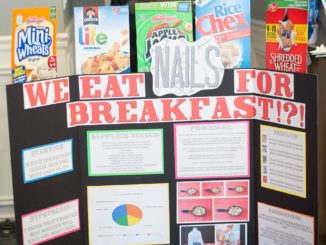
As homeschooling parents we give our children so many advantages as they move into the middle and upper grades and then to college. But, I believe there is one area where we can significantly improve the way we prepare them. That area is science.
Having taught science to several thousand homeschooling and college students over the past 25+ years, several things stand out to me. I’ve put together a list of 14 concrete steps we can take to better prepare our budding scientists.
Mistake #1 – Not starting to formally teach science early enough.
Start formally teaching science by the sixth grade. Students need the development that happens in those three years (sixth, seventh, and eighth grade) to prepare them for high school level science.
Mistake #2 – Generalizing the names for, and thus the way we teach, science. Call it Biology, Chemistry, Physics, etc. and not “General Science”, “Physical Science”, etc., even in the young grades. Doing this virtually eliminates the intimidation that comes with “Physics” etc in the high school years and clarifies what you’re teaching in the middle grades.
For example, at College Prep Science, rather than a homeschool year of “Physical Science,” we teach a semester of “Pre-Physics” and a semester of “Pre-Chemistry.” Rather than a homeschool year of “Life Science,” we teach a semester of “Pre-Biology” and a semester of “Pre-Anatomy and Physiology.”
Mistake #3 – Not doing enough testing.
Testing in the sciences prepares our students for the rigors of high school level science, college science, standardized testing, and assures that they are learning the material and that they are learning how to take tests. Of course it should be age appropriate but we should be testing.
Mistake #4 – Not doing timed tests.
I know that very few homeschooling families give their students timed tests and I think we are doing them a disservice. Gently beginning timed science tests in the middle grades gives students confidence, eliminates the anxiety associated with timed tests, and trains them to do well on standardized tests and on timed tests in college.
Start gently in the middle grades and slowly progress from there. For example, if you’re giving a student a 15 question test that you think will take them about 10 minutes to complete, tell them they have 25 minutes to take it. When they finish with plenty of time to spare it gives them confidence and relieves anxiety. The amount of extra time you give can be altered as they get older. Students actually do better on timed tests because they are focused on the test – knowing they have to work steadily. I always tell students, “If you are prepared and work steadily you will have plenty of time to finish this test.”
Mistake #5 – Teaching science year-round.
I know that many parents are proponents of year-round school (no summer break), but I believe it’s actually counter-productive. From experience with thousands of students I believe that students need to know they can work hard for a prescribed period of time and then have a total break from classes for two or three months.
Mistake #6 – Not starting the high school sciences early enough.
I know it’s easy to put off starting the high school sciences, but it’s important, especially if the students may be a college science major. Critical decisions should be made going into 8th grade. The critical factor is being ready for standardized testing and being able to fit in the needed sciences in the high school years. High school Biology should be taken in the 9th grade for most students and in the 8th grade for capable students who will likely be science majors.
Mistake #7 – Not beginning to take the ACT early enough.
Success on this standardized test is critical for college admissions and plays a direct role in how much financial aid a student will receive. Taking these tests twice per year beginning in 8th grade gives students experience and confidence which enables them to do well when they take this test for the final time in the spring of 11th grade. See my separate article on this topic.
Mistake #8 – Not specifically preparing to take the “Science Reasoning” section of the ACT. Homeschooled students score lower on this section of the ACT than on any other section. This is a section of the ACT that can be quite intimidating but can be mastered with preparation. It’s especially important if you are planning on a science major in college. See my separate article on this topic.
Mistake #9 – Not training students to meet deadlines.
As homeschoolers in general, this is a critical weakness and I think it’s even more important that we address this in the sciences. Beginning in the middle school grades, give your students firm deadlines that need to be met for assignments, tests, papers, etc. and stick to them. Besides being good training for academics, it’s just good life training too.
Mistake #10 – Not training students to write good lab reports.
As a college professor, I saw the pain of students who came in as science majors without good lab report writing skills and experience. Students get better at this with experience – there’s no substitute for that. Lab reports are simply the written summary of the scientific method. It takes lots of practice to develop the skill needed to do well on these.
Mistake #11 – Not creating a lab manual for every science class.
A lab manual is a collection of observations, data collection, and lab reports from a class. This gives students one place to neatly keep all of this information and gives them a sense of accomplishment. It’s impressive to have them lined-up on a shelf from all of their science classes. It’s also required by some states or umbrella groups for homeschoolers and some colleges want to see lab manuals as evidence of labs being completed.
Mistake #12 – Not encouraging exploration.
Encourage and give your students opportunities to be curious about God’s creation around them. Then, encourage them to experiment to answer questions about anything. This doesn’t have to be ground-breaking research but just simple things. Then, encourage them to write things down in a notebook. That may be the beginnings of a budding scientist at work.
Mistake #13 – Being squeamish on Creation.
Despite what you may hear in the media and elsewhere, God wrote the book on science. We need to boldly teach our students about God’s creation. Science and the world around us support biblical creation.
Mistake #14 – Not using graphing extensively.
Graphing, when done regularly through the middle and high school grades has a unique ability to develop critical thinking skills in students that not only benefit them in math, science, and academics in general, but also in life! We encourage families to have students construct one graph daily as part of their homeschooling day. They can graph anything. Let them run with it and you will be surprised at how creative they are. The resulting skills can be very, very beneficial.
Proudly WWW.PONIREVO.COM
Source by Greg Landry



